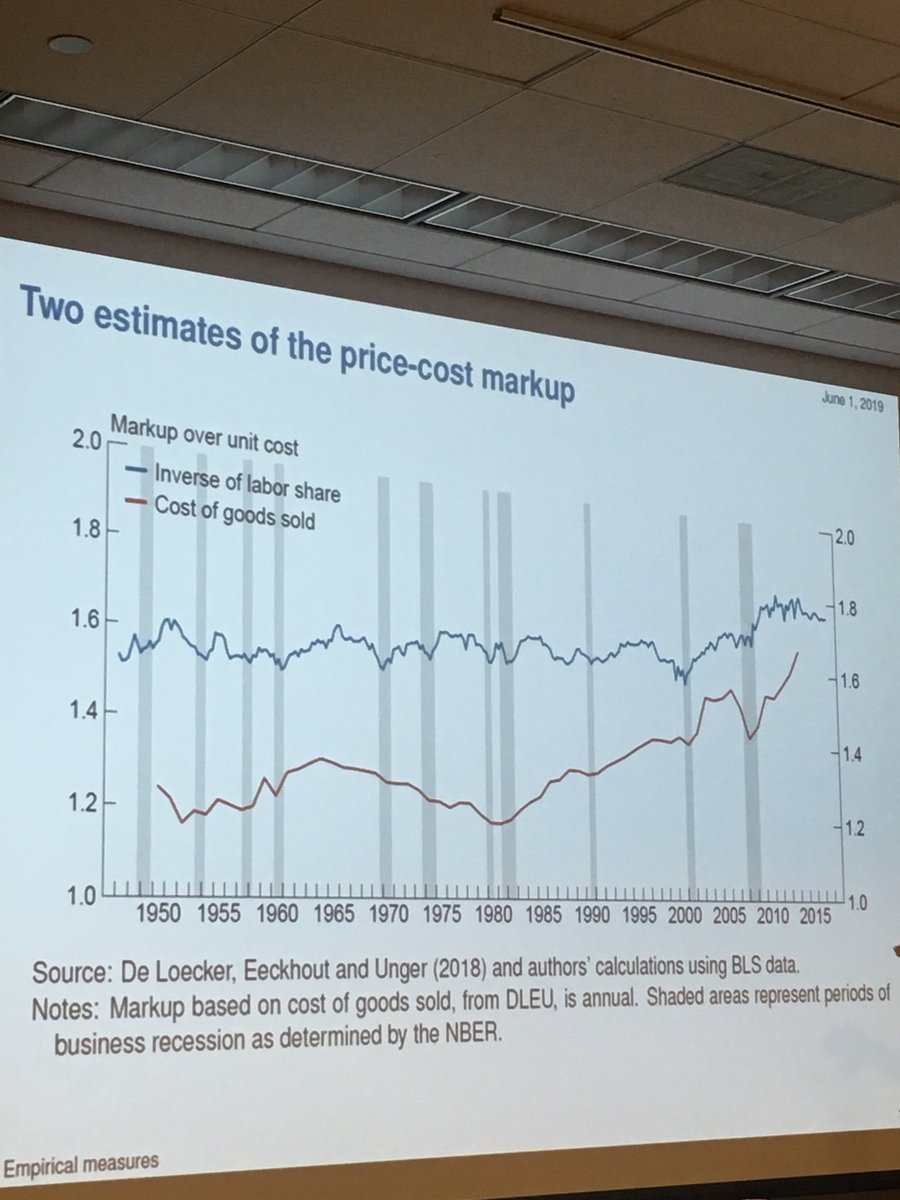#WIMC19 1

Q: is behavior of price markups consistent with sticky-price NK models?
#WIMC19 2
1) constructs a new measure of price markup
2) estimates the unconditional cyclicality of markups
3) analyzes the cyclicality of markups conditional on supply and demand shocks
#WIMC19 3
Use of labor margin bc:
1) 0 or small adjustment costs on worker hours
2) labor inputs and wages paid are well-measured
3) lots of estimates on elasticities of substitution bween labor and capital
4) answer to critiques in paper
#WIMC19 4
Estimates of price-cost margins and detrended price markups in graphs.
#WIMC19 5


#WIMC19 6
How to measure capital utilization? Three different versions:
1) constant utilization (at odds with standard NK)
2) Shapiro’s workweek of capital
3) Fernald’s utilization of capital and labor
#WIMC19 7
The latter are all over: some measures tell us about procyclicality, some about countercyclicality.
#WIMC19 9


We now look at the response of markup measures to 4 types of shocks:
1) monetary policy
2) government spending
3) TFP
4) investment-specific technology
Results in graphs below.
#WIMC19 10


















